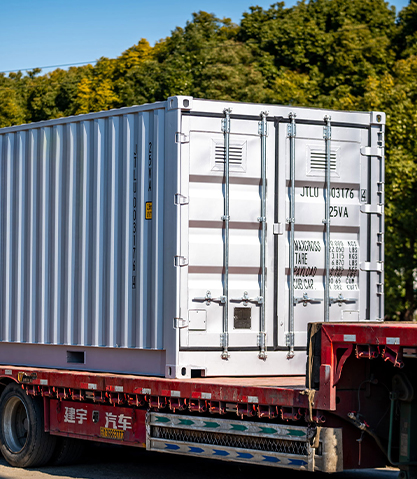Mobile solar power containers have become a transformative solution for delivering portable, reliable, and sustainable energy to remote sites, construction areas, disaster zones, military operations, and off-grid communities. Understanding their typical power output capacities and scalability options is essential for planners, engineers, and operators seeking flexible energy solutions.
Content
1. Typical Power Output Capacities
Mobile solar power containers are designed to provide a range of energy outputs depending on system size, panel efficiency, and storage capacity:
- Small-scale units: These typically generate 10 kW to 50 kW, sufficient for temporary construction sites, small off-grid communities, or emergency response situations.
- Medium-scale units: Capable of producing 50 kW to 200 kW, these units can support larger industrial operations, remote facilities, or microgrid integration.
- Large-scale units: High-capacity mobile solar containers can reach 200 kW to 500 kW or more, meeting the energy demands of large construction projects, military bases, or disaster relief hubs.
The power output depends not only on the number and type of solar panels installed but also on the efficiency of inverters, battery storage, and energy management systems. Advanced models may incorporate high-efficiency monocrystalline panels and smart inverters to maximize power generation.
2. Energy Storage and Continuous Supply
Since solar power is intermittent, most mobile containers integrate battery energy storage systems (BESS) to ensure continuous electricity supply:
- Lithium-ion batteries are common due to high energy density, long life cycles, and fast charge/discharge capabilities.
- Lead-acid batteries may be used for cost-sensitive applications, offering reliable storage at a lower initial investment.
- Battery capacities typically range from 50 kWh to 1,000 kWh or more, depending on the container size and intended load.
With sufficient battery storage, mobile solar power containers can supply electricity 24/7, even in low-light conditions, making them highly versatile for off-grid applications.
3. Scalability Options
One of the major advantages of mobile solar power containers is modular scalability, allowing operators to match energy supply with evolving demands:
- Series connection: Multiple containers can be connected in series to increase voltage output for larger industrial equipment.
- Parallel connection: Containers can operate in parallel to increase total current and overall energy supply, supporting larger communities or projects.
- Expandable battery banks: Additional battery modules can be integrated to extend storage capacity without replacing the entire system.
- Hybrid configurations: Mobile solar containers can be combined with diesel generators, wind turbines, or fuel cells, creating hybrid systems that ensure continuous power during extreme conditions or emergencies.
This modularity makes mobile solar power containers future-proof, allowing energy systems to scale with project growth or changing site requirements.

4. Design Considerations for Maximizing Output
To optimize power output and scalability, designers consider several factors:
- Solar panel efficiency: High-efficiency panels increase kW output within limited container space.
- Container layout: Foldable or extendable solar arrays allow more surface area for energy capture.
- Inverter and controller capacity: Proper sizing ensures maximum utilization of generated solar power without overloading the system.
- Cooling and ventilation: Efficient thermal management enhances battery and inverter lifespan, maintaining reliable output.
5. Applications Benefiting from Flexible Power Output
The scalable and modular nature of mobile solar power containers allows them to support diverse applications:
- Construction sites: Medium-scale units provide reliable electricity for machinery, lighting, and temporary offices.
- Disaster relief and humanitarian aid: Small- and medium-scale units supply emergency power to hospitals, shelters, and water treatment facilities.
- Military operations: Large-scale units offer tactical mobility with high energy output for field bases.
- Remote communities: Scalable containers enable phased energy deployment, growing with population or infrastructure needs.
6. Advantages of Scalable Mobile Solar Power
- Flexible deployment: Containers can be transported and deployed rapidly to meet temporary or evolving energy needs.
- Cost-effective expansion: Additional units or battery banks can be added without significant redesign.
- Sustainable energy: Reduces reliance on diesel generators, lowering carbon emissions and fuel costs.
- Reliable and continuous supply: Battery integration ensures energy availability even during periods of low sunlight.
Conclusion
Mobile solar power containers offer a range of power outputs from 10 kW to 500 kW or more, making them suitable for small off-grid sites to large industrial operations. Their modular and scalable design allows energy systems to grow with project demands, integrate hybrid power sources, and provide reliable electricity in remote, temporary, or emergency scenarios. By carefully selecting panel types, battery capacities, and system configurations, operators can maximize the efficiency, flexibility, and sustainability of mobile solar power containers.

 English
English 中文简体
中文简体 عربى
عربى



